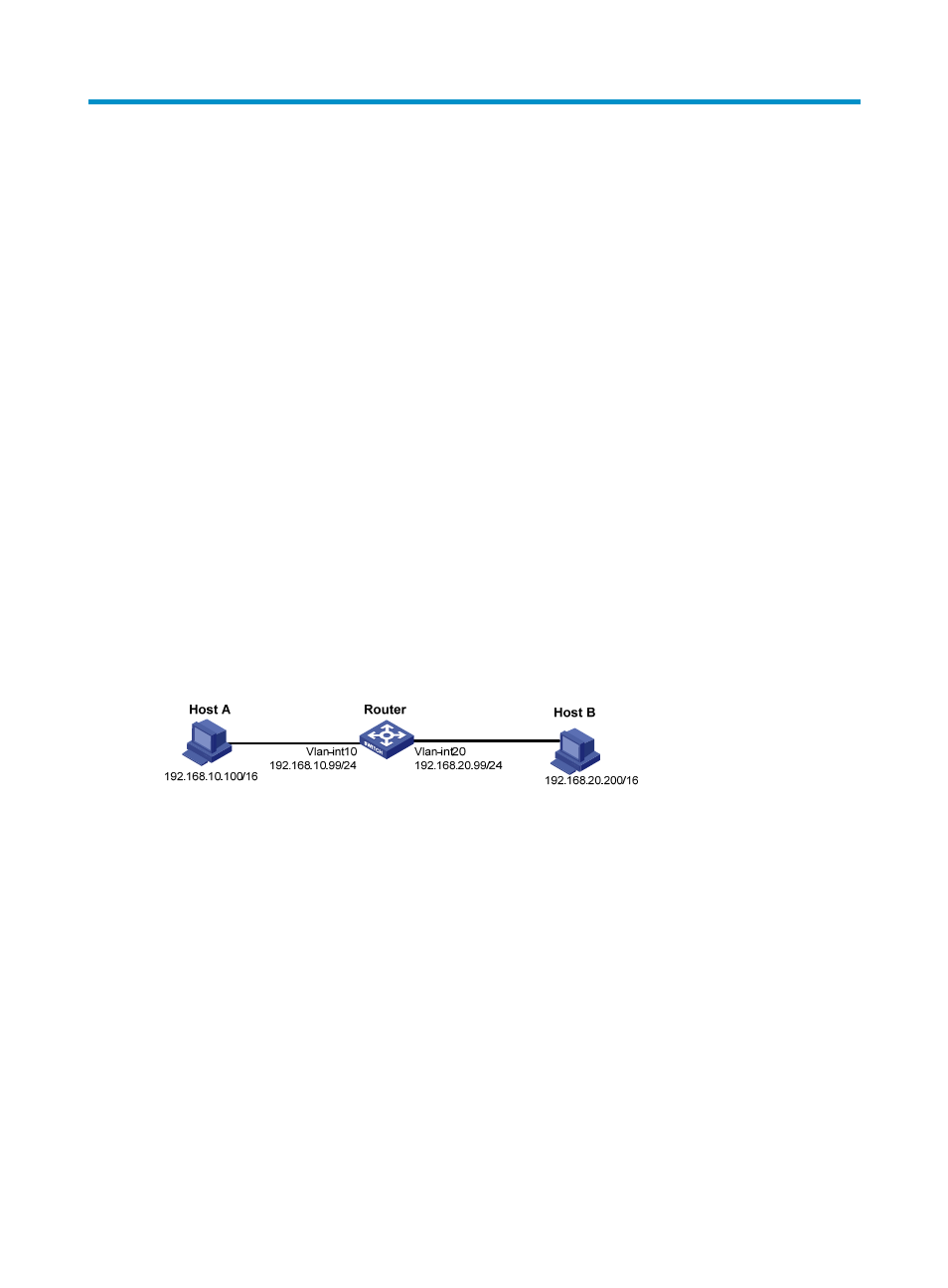Configuring proxy arp, Overview, Common proxy arp – H3C Technologies H3C S12500 Series Switches User Manual
Page 27: Local proxy arp

13
Configuring proxy ARP
Overview
Proxy ARP includes common proxy ARP and local proxy ARP.
•
Common proxy ARP allows communication when a sending host considers the receiving host to be
on the same subnet, but the receiving host actually resides on a different subnet.
•
Local proxy ARP allows communication between hosts that reside on the same subnet but are
isolated at Layer 2.
In both cases, a device located between the two hosts must respond to the request with the MAC address
of the receiving interface to allow Layer 3 communication between the two hosts. This is achieved by
proxy ARP, which hides the physical details of the network.
Common proxy ARP
Common proxy ARP allows hosts that reside on different subnets to communicate.
As shown in
, Router connects to two subnets through VLAN-interface 10 and VLAN-interface 20.
The IP addresses of the two interfaces are 192.168.10.99/24 and 192.168.20.99/24, which belong to
different subnets. However, Host A and Host B have the same prefix 192.168.0.0 assigned, and thus
consider they are on the same subnet.
Figure 5 Application environment of proxy ARP
Because Host A considers that Host B is on the same network, it sends an ARP request for the MAC
address of Host B. However, Host B cannot receive this request because it is in a different broadcast
domain.
You can solve the problem by enabling proxy ARP on Router, so that Router can reply to the ARP request
from Host A with the MAC address of VLAN-interface 10, and forward packets sent from Host A to Host
B. Router acts as a proxy of Host B.
A main advantage of proxy ARP is that it is added on a single router without disturbing routing tables of
other routers in the network. Proxy ARP acts as the gateway for IP hosts that are not configured with a
default gateway or do not have routing capability.
Local proxy ARP
As shown in
, VLAN 10 is a super VLAN. Host A and Host B belong to VLAN 2 and VLAN 3
respectively, but are isolated at Layer 2. Host A is connected with GigabitEthernet 3/0/1 and Host B is
connected with GigabitEthernet 3/0/3.
